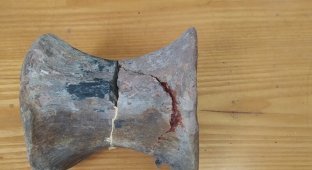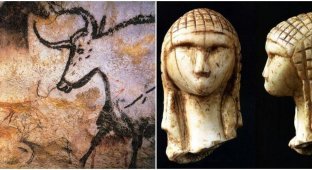Bones of the Wawel Dragon – interweaving of truth and fiction (8 photos)
This landmark is the actual bones that, according to legend, belonged to a Polish dragon. 
Wawel Cathedral houses the remains of several Polish kings, as well as some of the most famous works of ancient art in the country. 
Wawel Cathedral in Krakow
But the main attraction of the massive religious complex is the pile of bones, rumored to belong to a real local dragon. 
A sketch of a dragon by Sebastian Munster (1544)
Next to the entrance to the cathedral hang the "real" bones of Smok Wawelski, the dragon. They are connected to each other in a chaotic manner and hang high above the main doors. It is believed that before the founding of the city, the dragon lived in a cave under one of the local hills. 
"Dragon" Bones
He was a classic devourer of maidens, and locals even had to sacrifice a new beauty every month to satisfy the monster's hunger. 
According to legend, he was eventually killed by a local hero (or local apprentice, depending on the version) who fed the dragon lamb laced with sulfur. This made the beast so thirsty that it drank water from the river until it burst. 
As nice as it would be if the remains were truly mythological, they are actually believed to be the fossilized bones of a whale or mammoth. 
But regardless of their true origin, they have lain there for centuries. People attribute magical powers to them because in our age of high technology, we want to believe in fairy tales. 
In 1972, a dragon monument was erected near Wawel Hill, the author of which is the Polish sculptor Bronislaw Chromy



























